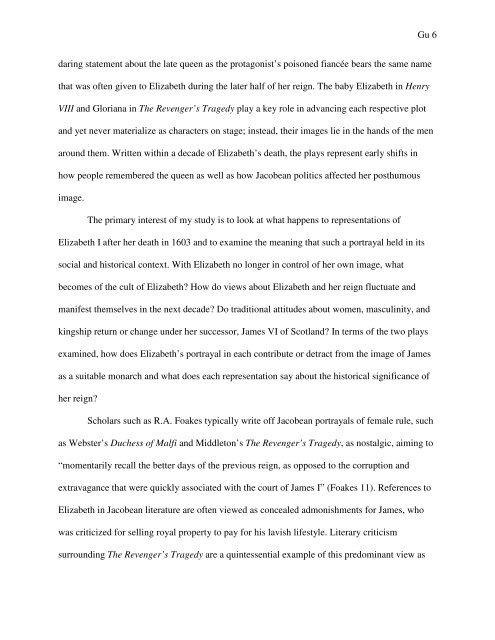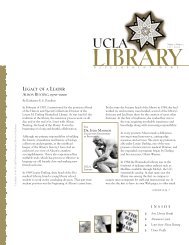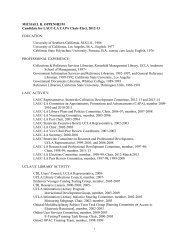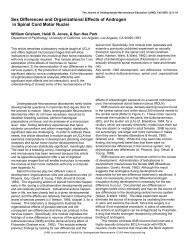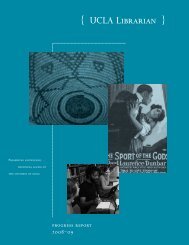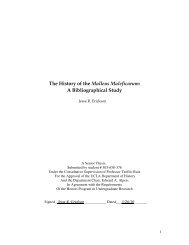Research Paper - UCLA Library
Research Paper - UCLA Library
Research Paper - UCLA Library
Create successful ePaper yourself
Turn your PDF publications into a flip-book with our unique Google optimized e-Paper software.
daring statement about the late queen as the protagonist’s poisoned fiancée bears the same name<br />
that was often given to Elizabeth during the later half of her reign. The baby Elizabeth in Henry<br />
VIII and Gloriana in The Revenger’s Tragedy play a key role in advancing each respective plot<br />
and yet never materialize as characters on stage; instead, their images lie in the hands of the men<br />
around them. Written within a decade of Elizabeth’s death, the plays represent early shifts in<br />
how people remembered the queen as well as how Jacobean politics affected her posthumous<br />
image.<br />
The primary interest of my study is to look at what happens to representations of<br />
Elizabeth I after her death in 1603 and to examine the meaning that such a portrayal held in its<br />
social and historical context. With Elizabeth no longer in control of her own image, what<br />
becomes of the cult of Elizabeth? How do views about Elizabeth and her reign fluctuate and<br />
manifest themselves in the next decade? Do traditional attitudes about women, masculinity, and<br />
kingship return or change under her successor, James VI of Scotland? In terms of the two plays<br />
examined, how does Elizabeth’s portrayal in each contribute or detract from the image of James<br />
as a suitable monarch and what does each representation say about the historical significance of<br />
her reign?<br />
Gu 6<br />
Scholars such as R.A. Foakes typically write off Jacobean portrayals of female rule, such<br />
as Webster’s Duchess of Malfi and Middleton’s The Revenger’s Tragedy, as nostalgic, aiming to<br />
“momentarily recall the better days of the previous reign, as opposed to the corruption and<br />
extravagance that were quickly associated with the court of James I” (Foakes 11). References to<br />
Elizabeth in Jacobean literature are often viewed as concealed admonishments for James, who<br />
was criticized for selling royal property to pay for his lavish lifestyle. Literary criticism<br />
surrounding The Revenger’s Tragedy are a quintessential example of this predominant view as


